|
Author
|
Message
|
|
KULTULZ
|
|
|
Group: Forum Members
Last Active: Last Week
Posts: 1.8K,
Visits: 306.3K
|
"Joe D Still trying to imagine how boiling causes flooding. Is it because the floats drop and let too much fuel in at once or what" Yes, and- When heat causes fuel percolation, high pressure is created in the bowl. As the gasoline becomes a vapor, pressure within the bowl forces the vaporized fuel to discharge through the bowl vents flooding the carb. If the boiling happens in the fuel line, excessive pressure, if not relieved through the pump, forces the needle/seat open giving results as as described above. Now this occurs on a straight with no turning of the vehicle mainly?
____________________________
|
|
|
|
|
KULTULZ
|
|
|
Group: Forum Members
Last Active: Last Week
Posts: 1.8K,
Visits: 306.3K
|
DryLakesRacer Posted- "KULTULZ, if your askin me and not JoeD, Mine is a 57-up, I mentioned I installed it when I put the 1953 Cadillac Carter WCFB on my "A" manifold." Sorry about that. I (or my browser) have difficulty with this format. I will try to be more considerate in the future.
____________________________
|
|
|
|
|
Ted
|
|
|
Group: Administrators
Last Active: 3 days ago
Posts: 7.5K,
Visits: 205.8K
|
The factory dual quad setups idled off of both carbs but those carbs were calibrated to do that. You can experiment with both carbs sharing idle responsibilities and see if that helps. I’ve always felt that the Y engines were happier in day to day driving with both carburetors being synchronized together rather than running off of one for normal driving. I’ll point to the basic intake manifold design for that and by using the synchronized carbs, then the fuel distribution to all eight cylinders is improved. From your initial description, if the tranny is simply put into neutral when you’re running 50 mph, it dies. Is that correct? Was the engine running rough prior to putting the tranny in neutral? Does the engine shut down by itself if simply allowing it to idle for an extended period of time? Having to hold the throttle open to start the engine and then letting the engine clear itself out once started sounds like a flooding issue. While much of the prior discussion wants to blame ethanol laden fuel, I’ll suggest checking the fuel for the actual ethanol content. I’ve found as much as 30% in pump gasoline advertised as being no higher than 10% so in that case, it could be a problem. In my part of the country, premium fuel has been no more than 5% ethanol although the pumps say the gasoline can contain up to 10%. What distributor are you running; early (LOM, 56 and older) or late (’57 and newer)? Are you running the engine with the vacuum advance hooked up? I see from the pictures that you’re using the 1956 Ford/Merc Carter carbs and those need some work if using them on a dual quad setup. The Carters are sensitive to varying fuel pressure and as such can be tempermental on float levels if the fuel pressure is varying. As previously mentioned, those ’56 model Carter carburetors are designed to work with the LOM distributors and if the vacuum advance port is used with the later model distributors, then there’s the potential for too much ignition advance at full throttle or high speed cruising. If not using the vacuum advance, be sure that the ports for the vacuum advance in both carburetors are plugged. Once you get past the stalling problem, you’ll need to address the secondary spring tension. When using carbs in pairs, the air flow cuts in half through each carb. The metering system in some single 4V carbs is not up feeding enough fuel with the reduced air flow when used in pairs and especially if the camshaft is on the rowdy side where manifold vacuum is significantly reduced or there’s some low speed reversion taking place within the intake manifold. Assuming that’s not a problem, then the secondary spring tension needs to be cut in half so the secondaries open up at a reasonable rpm and not at 5500 rpms and above. This doesn’t mean cutting the springs in half but rather fixing the springs so that they have half the tension. For the Holley carbs, spring kits are available to accomplish this. I’ve seen no such spring kits for the Carter carbs as Ford for ’56 and ’57 were the only Carter carbs I’m aware of that used secondary springs. The rest of the auto manufacturers used alternative means to open the secondaries on their Carter 4V carb equipped engines. I’ve simply had to experiment with both the ’56 and ’57 Carter carbs on cutting and heating the spring coils and trying the modified springs on the engine dyno. This would be tough to do on a running vehicle unless performed on a chassis dyno. Here are pictures of the ’56 Ford/Merc 312 Carter carbs on the dyno being tested.
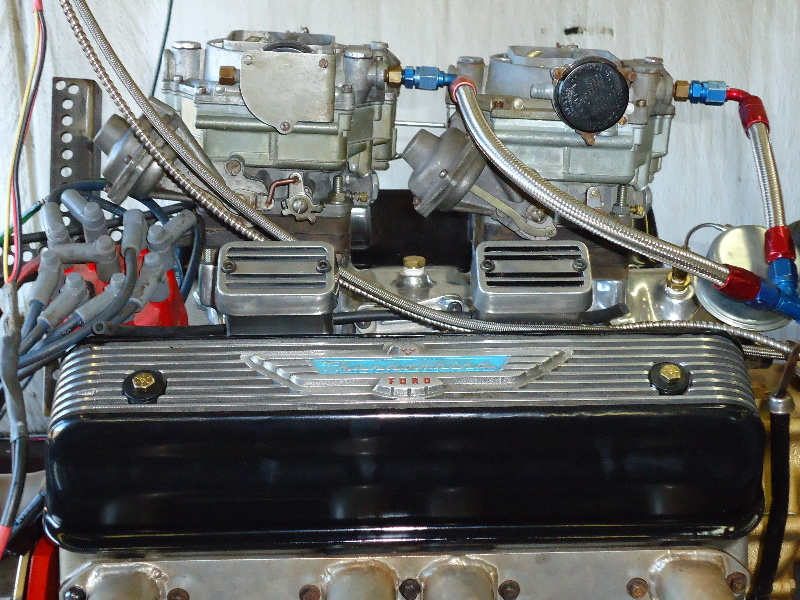
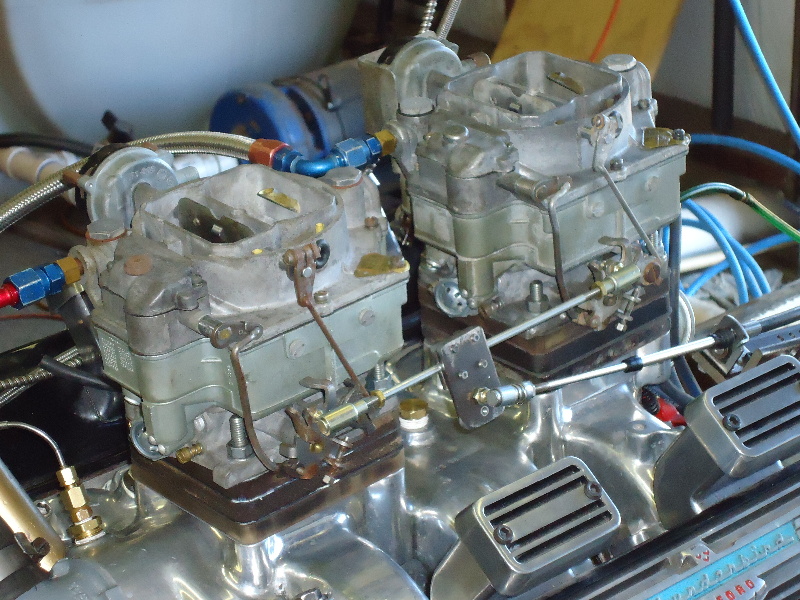
  Lorena, Texas (South of Waco) Lorena, Texas (South of Waco)
|
|
|
|
|
Joe D
|
|
|
Group: Forum Members
Last Active: 3 Years Ago
Posts: 123,
Visits: 84.9K
|
Wow, you guys have really helped me a lot. I'm learning, Thanks!
I believe the distributor is stock and not sure if its dual advance or not. I do know that it really does not change the performance of the engine if I plug it or hook it up to one of the carb ports or the manifold port.
The stalling occurs after highway speeds and accelerating fairly hard. Engine has to be fully heated up (180-195). When load is suddenly taken off by placing in neutral she dies. Tach drops to zero but she always restarts. I can keep her running by goosing the accelerator or down shifting so I'm still driving and trying deferent things that are improvements and don't cost a lot. Yesterday I insulated the fuel lines running along the frame near the headers and the pump discharge line to the carbs. I had some thick insulating tape and it took me about 1/2 hour.
Last night I ordered a set of phenolic spacers (from Dashman $90) for under the carbs to replace the aluminum ones. Thanks Kultulz!
I also learned that WCFB stands for Will Carter Four Barrel. ID ing the carb was huge so I could order the spacers and a kit if needed.
Other than the stalling issue the truck has never run better.
Thanks again Y-blockers!
Joe D
Joe D (The Frig)
1960 F-100 - 292 Y-Block
Philly Burbs
|
|
|
|
|
Joe D
|
|
|
Group: Forum Members
Last Active: 3 Years Ago
Posts: 123,
Visits: 84.9K
|
[quote] KULTULZ (10/28/2018)
"Joe D Still trying to imagine how boiling causes flooding. Is it because the floats drop and let too much fuel in at once or what" Yes, and- When heat causes fuel percolation, high pressure is created in the bowl. As the gasoline becomes a vapor, pressure within the bowl forces the vaporized fuel to discharge through the bowl vents flooding the carb. If the boiling happens in the fuel line, excessive pressure, if not relieved through the pump, forces the needle/seat open giving results as as described above. Now this occurs on a straight with no turning of the vehicle mainly? [no turning just taking load off engine at highway speeds (more than 50) and up tp temp (180)/quote]
Joe D (The Frig)
1960 F-100 - 292 Y-Block
Philly Burbs
|
|
|
|
|
Joe D
|
|
|
Group: Forum Members
Last Active: 3 Years Ago
Posts: 123,
Visits: 84.9K
|
Ted (10/28/2018)
The factory dual quad setups idled off of both carbs but those carbs were calibrated to do that. You can experiment with both carbs sharing idle responsibilities and see if that helps. I’ve always felt that the Y engines were happier in day to day driving with both carburetors being synchronized together rather than running off of one for normal driving. I’ll point to the basic intake manifold design for that and by using the synchronized carbs, then the fuel distribution to all eight cylinders is improved. From your initial description, if the tranny is simply put into neutral when you’re running 50 mph, it dies. Is that correct? yes only when up to atleast 180 degrees for a while. Was the engine running rough prior to putting the tranny in neutral? No it runs great. Does the engine shut down by itself if simply allowing it to idle for an extended period of time? No never. Having to hold the throttle open to start the engine and then letting the engine clear itself out once started sounds like a flooding issue. While much of the prior discussion wants to blame ethanol laden fuel, I’ll suggest checking the fuel for the actual ethanol content. I’ve found as much as 30% in pump gasoline advertised as being no higher than 10% so in that case, it could be a problem. In my part of the country, premium fuel has been no more than 5% ethanol although the pumps say the gasoline can contain up to 10%. I can ask a refinery lab tech since I work at a refinery that supplies Sunoco with their fuel in the Philly area. I do know since I used to blend gasoline that they add more light end components in the winter season (high vapor pressure) as opposed to (low vapor pressure) in the summer months. What distributor are you running; early (LOM, 56 and older) or late (’57 and newer)? Are you running the engine with the vacuum advance hooked up? I see from the pictures that you’re using the 1956 Ford/Merc Carter carbs and those need some work if using them on a dual quad setup. The Carters are sensitive to varying fuel pressure and as such can be tempermental on float levels if the fuel pressure is varying. As previously mentioned, those ’56 model Carter carburetors are designed to work with the LOM distributors and if the vacuum advance port is used with the later model distributors, then there’s the potential for too much ignition advance at full throttle or high speed cruising. If not using the vacuum advance, be sure that the ports for the vacuum advance in both carburetors are plugged. Once you get past the stalling problem, you’ll need to address the secondary spring tension. When using carbs in pairs, the air flow cuts in half through each carb. The metering system in some single 4V carbs is not up feeding enough fuel with the reduced air flow when used in pairs and especially if the camshaft is on the rowdy side where manifold vacuum is significantly reduced or there’s some low speed reversion taking place within the intake manifold. Assuming that’s not a problem, then the secondary spring tension needs to be cut in half so the secondaries open up at a reasonable rpm and not at 5500 rpms and above. This doesn’t mean cutting the springs in half but rather fixing the springs so that they have half the tension. For the Holley carbs, spring kits are available to accomplish this. I’ve seen no such spring kits for the Carter carbs as Ford for ’56 and ’57 were the only Carter carbs I’m aware of that used secondary springs. The rest of the auto manufacturers used alternative means to open the secondaries on their Carter 4V carb equipped engines. I’ve simply had to experiment with both the ’56 and ’57 Carter carbs on cutting and heating the spring coils and trying the modified springs on the engine dyno. This would be tough to do on a running vehicle unless performed on a chassis dyno. A lot of this stuff is way over my head but I do know some great mechanics like you! Here are pictures of the ’56 Ford/Merc 312 Carter carbs on the dyno being tested.


Joe D (The Frig)
1960 F-100 - 292 Y-Block
Philly Burbs
|
|
|
|
|
DryLakesRacer
|
|
|
Group: Forum Members
Last Active: Last Month
Posts: 1.7K,
Visits: 340.1K
|
JoeD, this may seem a little primative and others will probably chime in. To check which distributor you have just take off the cap and try to turn the rotor. If it will not move in either direction it's a Loadmatic. If it will move in one direction about 10-12* it is a centrifugal, which is 57-up. Also stick a long enough hose on the distributor can filling and suck on it to see if the plate moves, if it does that will prove your vacuum can is working. If it will stay moved with your tongue tip over the end of the hose the can is good.
Your truck is a 1960. I cannot believe your dist is a loadmatic.
As Ted stated the Merc WCFB's were used with loadmatics in 55-56 and were not compatible with the 57-up distributors that's why I first went to the GM carbs because they were.
There were many of the guys I knew back in the 60's who ran their distributor vacuum off manifold and not ported and made them work. The engine would always idle faster and the just turned them down. Others ran no vacuum and set the advancing springs as light as possible and kept total advance around 34-37 degrees and just lived where initial advance showed on the balencer. We were just kids, what did we know anyway.
We all have ideas that seem to work. Eventho I'm a California guy I've met Ted and watched him do dyno pulls (thanks to Karol Miller) and he has done more tests and ran every combination known to man on a Y-Block and I take his word as gospel. He and so many others on this site have helped me iron out problems which have never happened to me before and cannot thank them enough.
You will figure this out.
56 Vic, B'Ville 200 MPH Club Member, So Cal.
|
|
|
|
|
oldcarmark
|
|
|
Group: Forum Members
Last Active: Last Week
Posts: 3.7K,
Visits: 32.6K
|
DryLakesRacer (10/28/2018)
JoeD, this may seem a little primative and others will probably chime in. To check which distributor you have just take off the cap and try to turn the rotor. If it will not move in either direction it's a Loadmatic. If it will move in one direction about 10-12* it is a centrifugal, which is 57-up. Also stick a long enough hose on the distributor can filling and suck on it to see if the plate moves, if it does that will prove your vacuum can is working. If it will stay moved with your tongue tip over the end of the hose the can is good. Your truck is a 1960. I cannot believe your dist is a loadmatic. As Ted stated the Merc WCFB's were used with loadmatics in 55-56 and were not compatible with the 57-up distributors that's why I first went to the GM carbs because they were. There were many of the guys I knew back in the 60's who ran their distributor vacuum off manifold and not ported and made them work. The engine would always idle faster and the just turned them down. Others ran no vacuum and set the advancing springs as light as possible and kept total advance around 34-37 degrees and just lived where initial advance showed on the balencer. We were just kids, what did we know anyway. We all have ideas that seem to work. Eventho I'm a California guy I've met Ted and watched him do dyno pulls (thanks to Karol Miller) and he has done more tests and ran every combination known to man on a Y-Block and I take his word as gospel. He and so many others on this site have helped me iron out problems which have never happened to me before and cannot thank them enough. You will figure this out. Take the Cap off. If U can see Springs its a Loadomatic. No Springs visible makes it a Dual Advance 57+ Distributor.
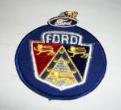 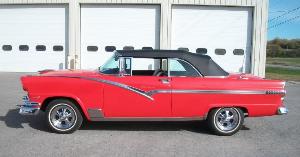
|
|
|
|
|
charliemccraney
|
|
|
Group: Moderators
Last Active: Yesterday
Posts: 6.1K,
Visits: 443.0K
|
Or, with the distributor cap off: Load-O-Matic, advance springs visible Centrifugal, advance springs not visible. I run manifold vacuum because more advance does help an engine to idle cooler and it does feel ever so slightly more responsive right off idle than ported vacuum. There's not much to make work with this vs ported. Adjust idle speed down, readjust mixture screws and that's about it. The functional difference between the two is at idle, no additional advance with ported, full vacuum advance with manifold. Just above idle, ported becomes manifold and they work the same. In the case here, ported is not an option and it must be manifold or nothing.
Lawrenceville, GA
|
|
|
|
|
KULTULZ
|
|
|
Group: Forum Members
Last Active: Last Week
Posts: 1.8K,
Visits: 306.3K
|
I think all of this boils down to a mis-match of parts, not know whether the carburetion/ignition is LOM or DUAL ADVANCE, or a possible combination of either.. The vacuum secondary WCFB was offered (by LINC-MERC) in both LOM and DUAL ADV (1957/ ). That said, we need to know if the carb(s) has a SPARK CONTROL VALVE and DIST TYPE. It would also be helpful to know the INTAKE ID. The 1st photo shows a LOM DIST BOWL and the second a 57/59 DUAL ADVANCE. 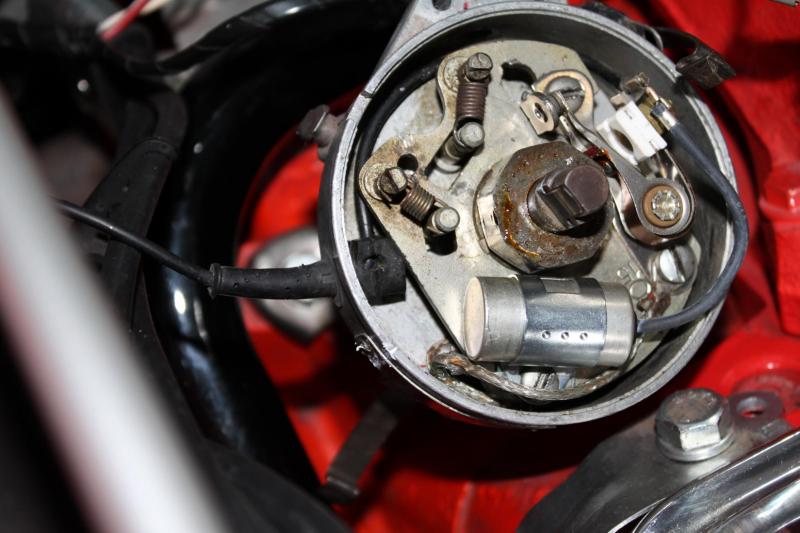
____________________________
|
|
|
|